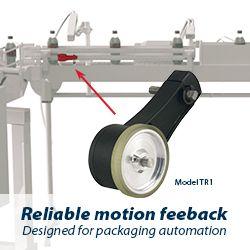MOV.AI launches a Robotics Engine Platformâ„¢ that allows manufacturers and integrators to develop AMRs and deploy them in dynamic environments
The latest version of the MOV.AI platform offers a visual IDE, advanced algorithms such as 3D SLAM, simulation tools, scene and behavior editors, an open API framework and more.
MOV.AI today launched its revolutionary Robotics Engine Platformâ„¢, which allows AMR manufacturers, automation integrators and manufacturers of manual logistics vehicles to quickly build AMRs suitable for 85% dynamic environments. The platform is the latest version of the MOV.AI software.
The Robotics Engine Platformâ„¢ speeds up robot development, ensures deployment success and enables smooth operation and control of robot fleets.
The demand for Autonomous Mobile Robots (AMRs) is exploding. By 2026, The AGV and AMR Market is expected to reach $13.2B with a growth rate of ~35%, according to Research and Markets. In the forklift market, automated vehicles are expected to rise from 1% to 33% in 2030, according to ABI Research.
Despite growing demand, logistic vehicle manufacturers and new players find it hard to develop AMRs and automated logistics vehicles that meet customer expectations.
"Until now, AMR manufacturers had to choose between long and expensive inhouse development and 3rd party black-box solutions with hardware limitations, " says Motti Kushnir, MOV.AI CEO. "We are changing that. For the first time, companies have everything they need to easily build advanced robots that are simple to deploy and operate. By providing an end-to-end system that contains everything that is needed to create great robot software - whether it's integrating 3rd party hardware, selecting and integrating advanced autonomy algorithms, visual deployment and operation tools or integration with automation environments - MOV.AI frees manufacturers to focus on what makes them unique."
"Robot development is complex, and there are very few development tools to speed it up. ROS is great and constantly evolving, but it was built for robotics researchers that do not need to deal with enterprise needs such as quality, versioning or security," says Limor Schwietzer, CTO and founder of MOV.AI. "We built a platform that non-expert developers can use to pick and choose the functionality they need and easily configure it into their robot software. We also added all the tools needed for the important tasks of deployment and operation."
New version highlights:
Robot development tools and advanced functional algorithms:
Visual ROS-based IDE (Integrated Development Environment)
An open plugin framework that allows developers to easily integrate MOV.AI and 3rd party off-the-shelf algorithms and drivers.
Advanced autonomy algorithms:
3D SLAM Localization - enabling +-2 cm localization accuracy in 85% dynamic environments.
Autonomous navigation - ensures safety and optimal movement in highly dynamic environments by continuously adjusting the path plan according to real time data.
Automated obstacle avoidance and Risk prevention - integrates advanced sensing and localization with autonomous navigation and control to reduce the risks involved in highly dynamic environments.
Automated sensor calibration to ensure accuracy and avoid degradation due to accidents, vibrations, or sudden temperature changes.
3D physics simulator - integrated into the MOV.AI IDE. Speed up development without compromising on quality by testing robot software without the need for a physical robot.
Enterprise-grade software tools - debugging, versioning, CI/CD and security, all available directly in the IDE.
Integrated deployment tools
Scene editor - easily define an operational layer - zones, keypoints, virtual paths and more - for behavior planning and real time decision making.
Behavior editor - a visual interface that allows robot mission automation.
Task management - define tasks using task and data templates, enabling the automatic generation of hundreds of task instances and integrating them with the scene.
Integrations - with the automation environment and with legacy hardware and external sensors and actuators. Share data with diverse sources.
Tools for Robot and robot fleet operation
Interruption-free software updates and cybersecurity updates
Task Control - ad hoc prioritization to meet changing demands
Fleet management
Analytics, alerts and calls to action
About MOV.AI
MOV.AI is changing AMRs as we know them.
It provides AMR manufacturers and integrators with the tools they need to create great robots quickly, allowing users to benefit from automation products that are as flexible as the age we live in.
Born out of an unmet need, MOV.AI is a ROS-based Robotics Engine Platformâ„¢ packaged in an intuitive web-based interface. It contains everything needed to build, deploy, and operate intelligent robots. MOV.AI completely changes the way Autonomous Mobile Robots are developed, in terms of time to market, cost and flexibility.
Featured Product

Model TR1 Tru-Trac
The Model TR1 Tru-Trac® linear measurement solution is a versatile option for tracking velocity, position, or distance over a wide variety of surfaces. An integrated encoder, measuring wheel, and spring-loaded torsion arm in one, compact unit, the Model TR1 is easy to install. The spring-loaded torsion arm offers adjustable torsion load, allowing the Model TR1 to be mounted in almost any orientation - even upside-down. The threaded shaft on the pivot axis is field reversible, providing mounting access from either side. With operating speeds up to 3000 feet per minute, a wide variety of configuration options - including multiple wheel material options - and a housing made from a durable, conductive composite material that minimizes static buildup, the Model TR1 Tru-Trac® is the ideal solution for countless applications.
